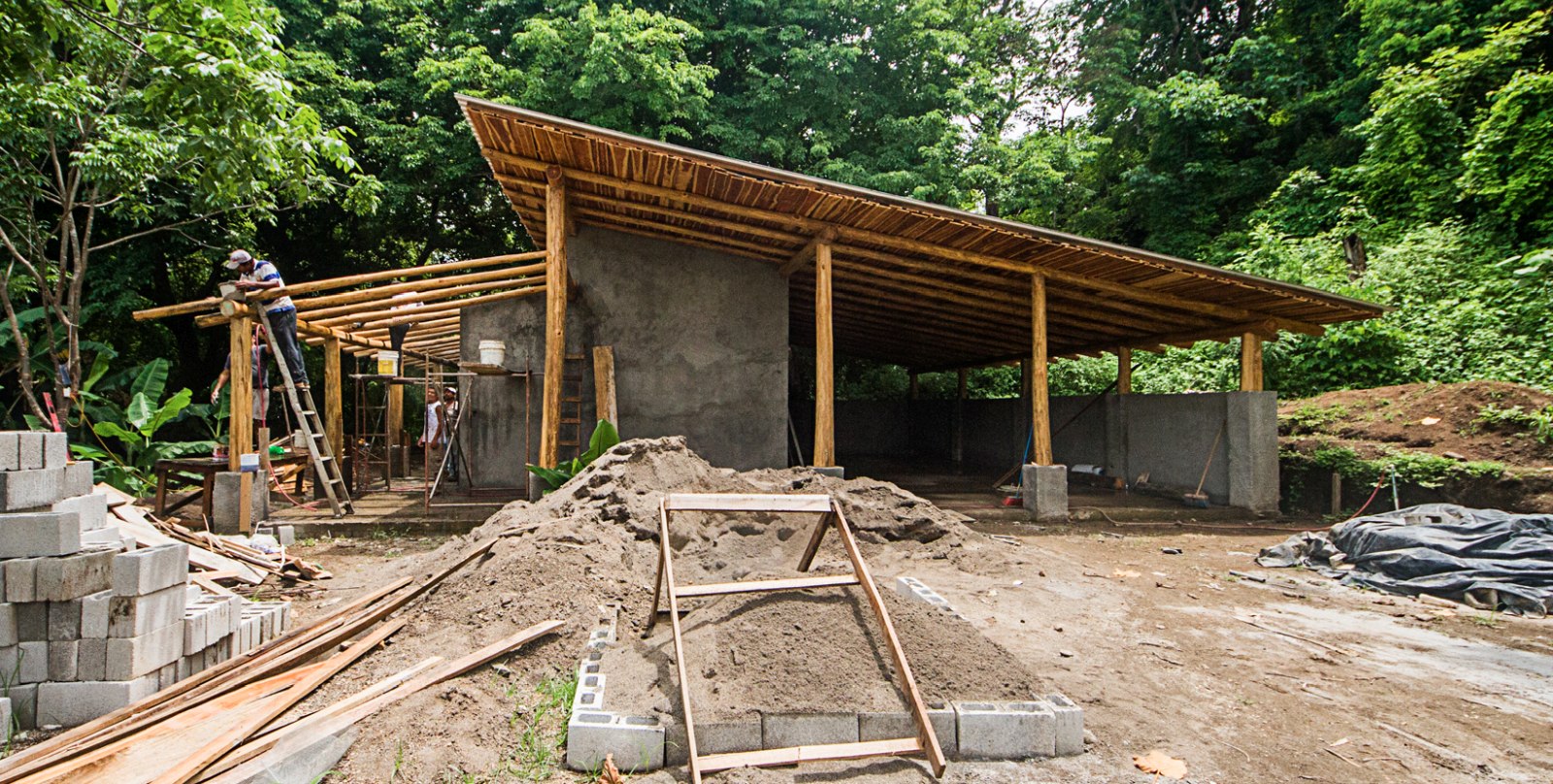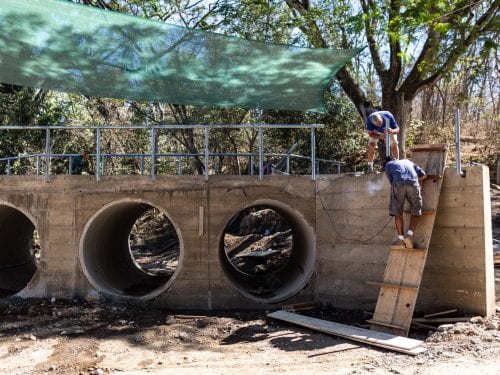
After 15 years of suffering through ever kind of discomfort, the students of the Ostional Distance Learning High School (Telesecundaria de Ostional) will finally have a cafeteria that will allow them to eat in a more comfortable setting.
The construction effort was led by residents of the community, the local development association and the board of education, who came together to raise money for the project.
Elmith Molina, president of the board of education, explained that the project was made possible by the initiative of a group of Americans, who decided to support part of the materials cost and labor for the project after seeing the precarious conditions that faced the students.
“The cafeteria’s siding was sheet metal; it had a dirt floor and bad conditions. In light of that a group of foreigners offered to donate part and some 230 residents gave ¢13,000 each ($26); with that we started the project,” Molina explained.
According to Molina, the project cost approximately ¢25 million ($50,000) and will be finished towards the end of June.
For her part, Magdalena Vega, president of the Ostional Development Association (ADIO – Asociacion de Dessarrollo de Ostional), said that the distance learning school has a number of needs. Since its founding 15 years ago, only two rooms have been built and students are forced to attend classes in the old teacher’s home and a pavilion outside.
“We have presented a complaint to the Ministry of Education (MEP – Ministerio de Educacion Publica), but there hasn’t been a response,” Vega explained.
The Ostional distance learning high school was inaugurated in 1998 and currently has 60 students from the area.
For Vega, the cafeteria project is simply a first phase, as the construction of two rooms and a kitchen are coming.
“Bringing this project to Ostional makes us committed. A lot of young graduates from here have left and the idea is to strengthen this school; we are completing projects in the order of necessity,” said Vega.
The distance learning system was created in 1998 with the goal of offering access to education for students in rural areas. The system consists of giving lessons through the use of audio-visual materials, with a teacher as a guide.
In recent years, the facilities have been disappearing to open space for the rural high school system. Of 140 total distance learning high schools that were created in the country, only 32 remain in areas such as Nicoya, Sarapiqui and Buenos Aires de Puntarenas, among others.







Comments